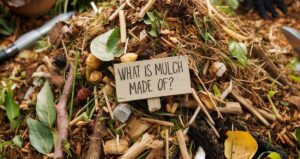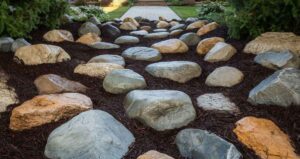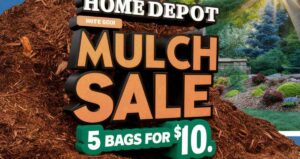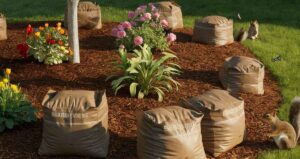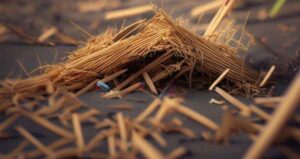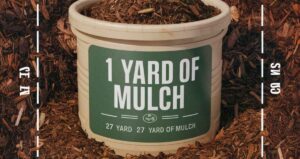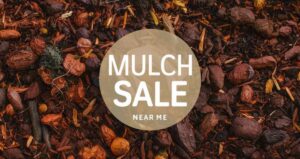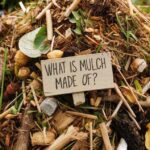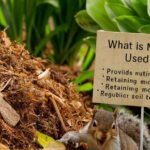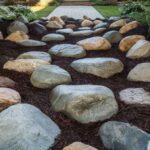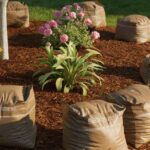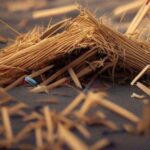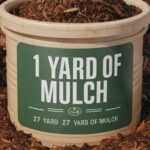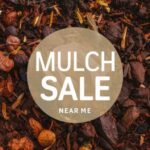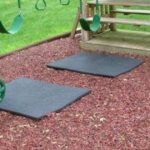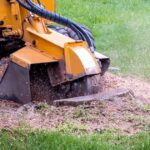Discovering yellow growth on your mulch can be a perplexing sight for gardeners. Understanding the origins and implications of this phenomenon is crucial for maintaining a healthy garden ecosystem. What is the yellow stuff growing on my mulch?
becomes a pivotal question to address. This enigmatic substance, often mistaken for mold or fungus, can signify various organisms or environmental changes affecting the mulch. It might denote the presence of slime mold, algae, or even pollen, each with distinct characteristics and effects on your garden’s well-being.
In this exploration, we delve into the identification, causes, impacts, and management of this yellow growth, unraveling its true nature and offering insights into maintaining vibrant, thriving gardens despite the appearance of this puzzling yellow substance on your mulch.
Uncovering the Mystery: Identifying Yellow Growth on Mulch
Unraveling the enigma of yellow growth on mulch involves careful observation and identification. This discoloration could stem from various sources, such as fungal growth, algae, or slime molds. Fungi often manifest as powdery or slimy patches, while algae present as a greenish-yellow film.
Slime molds typically appear as bright yellow clusters resembling scrambled eggs. Distinguishing between these organisms is pivotal in understanding the potential impact on the garden ecosystem. Fungal growth might indicate excess moisture or poor air circulation, while algae could thrive in damp, shaded areas.
Slime molds are usually harmless, feeding on organic matter within the mulch. Identifying the specific yellow growth aids in choosing appropriate remedies, whether it involves improving drainage, increasing sunlight exposure, or simply accepting harmless growths as part of the natural mulch decomposition process.
Types of Yellow Growth on Mulch: Fungi or Other Organisms
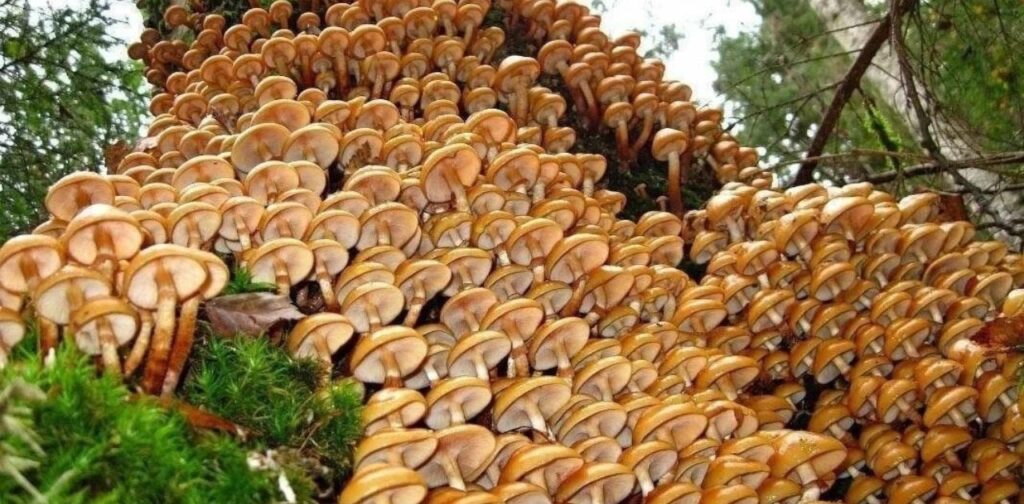
The appearance of yellow growth on mulch can stem from various sources, predominantly fungi or other organic organisms. Fungi like slime mold or dog vomit fungus often manifest as bright yellow masses, appearing unsightly but typically harmless to plants. On the other hand, bacterial or algal growth can also present as yellow patches, usually indicating excess moisture or poor aeration.
Identifying the specific type of growth is pivotal in understanding its impact and determining appropriate remedial actions. While some yellow growths may not directly harm plants, others might signal potential issues that require attention. Distinguishing between fungal and other organic growths helps in implementing targeted solutions and maintaining a healthy environment for your garden.
Exploring Possible Organisms Responsible for Mulch Discoloration
Mulch discoloration often stems from various organisms. Fungi like slime molds or dog vomit fungus create vivid yellow patches. Leucocoprinus birnbaumii, commonly known as the yellow mushroom, also contributes to mulch yellowing. Algae or lichen growth, though less common, might manifest as yellow hues.
Understanding these organisms’ characteristics aids in identifying and addressing discoloration. Proper diagnosis ensures effective management strategies to maintain a healthy mulch environment and prevent potential harm to plants.
Causes of Yellow Growth on Mulch: Environmental Factors
Environmental factors contribute significantly to the appearance of yellow growth on mulch. Moisture retention, especially in humid conditions, fosters the growth of various fungi or algae, manifesting as yellow substances. Lack of adequate sunlight or airflow in shaded areas can also promote this growth.
Additionally, organic matter breakdown underneath the mulch, coupled with warm temperatures, creates an ideal breeding ground for these organisms. Understanding these environmental influences aids in managing and preventing yellow growth on mulch, ensuring a healthier and aesthetically pleasing garden landscape.
Examining Environmental Conditions Leading to Yellow Substances
Examining the environmental factors contributing to yellow substances on mulch is crucial. Moisture, sunlight exposure, and organic debris accumulation create a perfect breeding ground for fungi or algae, often causing the yellow discoloration.
High humidity, improper drainage, or excessive rainfall exacerbate these conditions, promoting the growth of these organisms on the mulch surface. Understanding these environmental triggers aids in managing and preventing the appearance of yellow substances, ensuring a healthier environment for your garden or landscaping.
Effects of Yellow Growth on Mulch: Impact on Plants and Soil
Yellow growth on mulch can impact plants and soil health in various ways. While some yellow substances might be harmless, others could indicate fungal growth or microbial activity that competes with plants for nutrients. This growth can hinder plant growth by depriving them of essential elements, leading to stunted development or reduced vigor.
Moreover, certain fungi or organisms might release toxins harmful to plants, affecting their overall health. Additionally, the presence of yellow growth can alter the soil’s composition, affecting its pH or nutrient availability, which further impacts plant growth. Understanding the effects of yellow growth on mulch is crucial; timely identification and management can mitigate potential harm to plants and preserve the soil’s health for optimal garden growth.
Treatment and Prevention: Managing Yellow Growth on Mulch
Managing yellow growth on mulch involves strategic treatment and prevention measures. Firstly, assess the type of growth; if it’s fungal, consider adjusting watering practices to minimize moisture accumulation. Rake and turn the mulch regularly to improve aeration and reduce dampness.
Applying fungicides or biofungicides can help control fungal growth if deemed necessary. For non-fungal growth, like slime molds or pollen, manual removal with a rake or hose is effective. Preventative steps include using well-draining mulch, ensuring proper sunlight exposure, and maintaining good air circulation.
If you’re pondering, What color of mulch should I use? Swap it if recurring issues persist. Identifying the cause and applying customized remedies is crucial in controlling and averting yellow growth on mulch, securing a healthier garden for your plants.
Techniques for Addressing and Avoiding Yellow Substances on Mulch
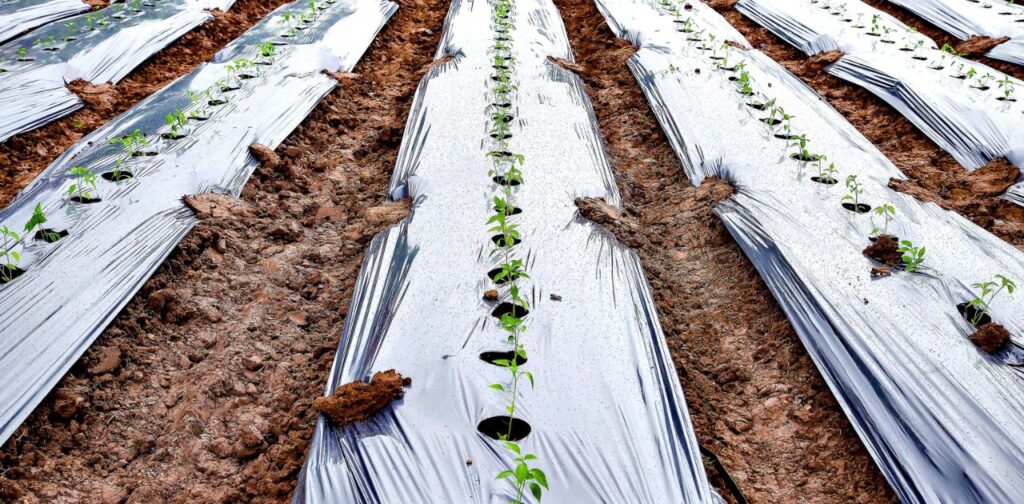
Addressing and preventing yellow substances on mulch involves several effective techniques. Firstly, aerate the mulch regularly to enhance air circulation and reduce moisture buildup, limiting favorable conditions for growth. Remove any decaying organic matter that could foster yellow growth.
Applying a fungicide or beneficial microbes can deter fungal growth. Additionally, maintaining proper drainage and avoiding overwatering aids in preventing yellow substances from developing. These proactive measures assist in addressing existing yellow growth while preventing its recurrence, ensuring a healthier and more vibrant garden environment.
Professional Advice: Consultation for Mulch Discoloration
When faced with mulch discoloration issues, seeking professional advice is pivotal. Expert consultation provides a comprehensive assessment of the yellow growth’s nature, whether fungal or bacterial. Professionals conduct thorough examinations, identifying the specific organism causing discoloration and potential threats to plant health. They offer tailored solutions, recommending suitable treatments or preventive measures to restore mulch vitality.
Through consultations, gardeners gain insights into environmental factors contributing to discoloration, such as excess moisture or inadequate aeration. This professional guidance equips individuals with knowledge to mitigate future occurrences and maintain healthy mulch beds. Seeking consultations for mulch discoloration ensures precise diagnoses and effective strategies, preserving the aesthetics and functionality of garden landscapes.
conclusion
Understanding the origins of the yellow substance on mulch is crucial for maintaining a healthy garden. Identifying this growth, whether it’s fungal in nature or caused by other environmental factors, allows for appropriate remediation. While some yellow growths might signify harmless fungal species aiding in decomposition, others could indicate underlying issues detrimental to plant health.
Regular monitoring and swift action, if necessary, are essential. Techniques for managing and preventing this growth involve adjusting moisture levels, improving airflow, or employing fungicidal treatments when appropriate. Seeking expert advice can provide valuable insights and targeted solutions for specific cases.
Differentiating between harmless growth and potential contaminants ensures appropriate action is taken, fostering a thriving garden environment free from harmful influences, thus safeguarding the overall health of plants and soil.

